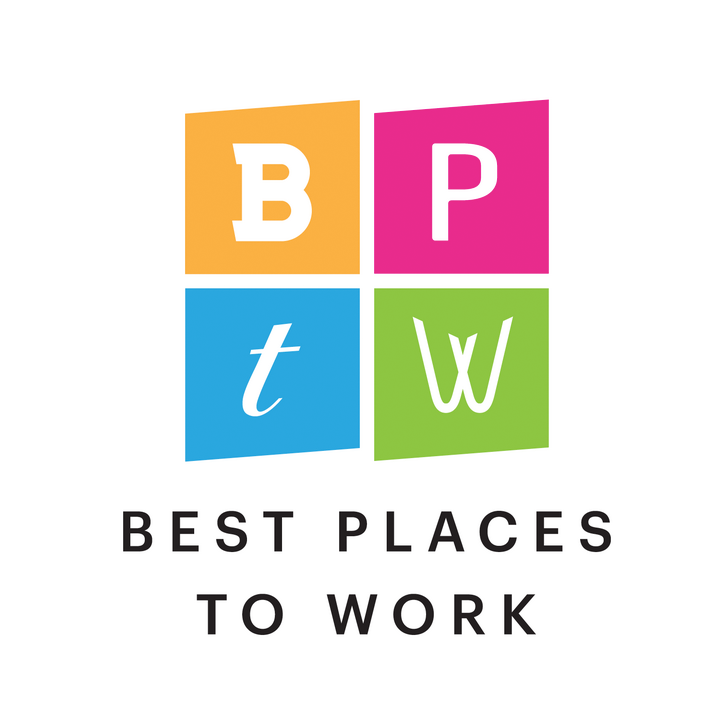
Your personal brand is how you show up in the world personally and professionally. It extends beyond what you do for work to encompass deeper and more personal attributes, including your hobbies, passions, values, and beliefs. But too often, business leaders stop short of developing and sharing their authentic personal brand. Instead, they tie their personal brand exclusively to their employer’s brand, limiting it to what they do for work, who they work for, and the organization’s values.
The trouble with this approach is that your brand isn’t really your personal brand; it’s simply how you relate to your employer’s brand (or, if you are an entrepreneur, the company that you own). Its shelf life only lasts however long you work for the particular employer. I know this challenge all-too-well because it’s the path I took before I began to intentionally build my personal brand.
In talking with business leaders at growing companies, I’ve found that aspects of my personal brand journey resonate with them. Now I’m sharing it more broadly to help others build their personal brands.
A personal brand story: From a limiting to authentic personal brand
When I was in my 20s, I started working for a B2B technology services and consulting firm. It was an exciting time in my career, and I spent 13 years helping to grow the company. The early team was young, and none of us had established personal brand trust based on who we were as leaders. We just wanted to build something meaningful, and we were determined to do it successfully.
At that time, digital and social media were relatively new, so I spent a lot of time at networking events: shaking hands, handing out business cards, and adamantly following up to establish solid connections. I wanted to be known as someone who did right by people, always followed up, and kept my promises. I didn’t realize it then, but I was establishing credibility in my personal brand. I was laying the groundwork for fundamental pieces of my personal brand that would eventually pay dividends in my career and help grow my future business.
What I also did, unwittingly, is build most of my personal brand around the relationships I had nurtured through my employer. All of my social media activity was about that company’s brand. None of it revealed much of who Jennifer Zick was at her core. I had a limiting personal brand.
The following graphic illustrates the framework of my personal brand at that time: limited to my role within my employer’s business and network of influence.

Eventually, I was ready to move on from my role within that company to pursue other marketing leadership opportunities. As I considered my next move, it occurred to me that my story was too synonymous with my employer’s story. It was a great story, but to advance my own career beyond that company, I realized that I would need to establish a stronger personal brand based on how I engage in various aspects of my life and career, not solely on how I relate to my employer’s brand. Something true to myself that would outlast my tenure at any one company.
I spent time considering how I could add dimension to my personal brand story. I started by thinking about creating a dimensional personal brand where I could simultaneously represent my employer’s brand well and represent myself thoughtfully while considering what was appropriate for professional and personal networks.
Through this exercise, I began to layer more into my personal brand. With thoughtful interactions and execution, my personal brand eventually became about more than just my employer. It grew to include my hobbies and passions, personal network, business network, people I admire, the industry I worked in, and related industries and topics. I joined nonprofit boards, took on leadership positions in my church, and got more active on LinkedIn and Twitter.
You’ll see in the image below how my personal brand expanded to include more aspects of where I was connected; my broader communities of influence and relationships beyond my employer and their business network.

Then came another pivotal moment in my career that again shifted how I approached my personal brand. I unexpectedly lost my corporate marketing job and had to decide whether to pursue a new one or launch Authentic — a business I had been dreaming up for a while.
Launching Authentic helped me recognize that there was an even deeper, more authentic level to personal brand. To develop an authentic personal brand meant I needed to go beyond what I do (limited brand), and where I’m connected (dimensional brand), to layer in who I am.
What were my values and beliefs, hopes and dreams, scars, fears, struggles, feelings, and questions? This process took a lot of thoughtful discernment rooted in my personal and professional values — and how those aligned with this new corporate brand I was creating. For me, this meant being more transparent with my connections about my successes and my failures, my hopes and my disappointments, my faith and my fears.
Of course, I had the luxury and freedom as a business owner to decide how much of myself I wanted to share with the world. This isn’t the case for many business leaders, especially those in highly regulated industries that require an even higher level of thoughtfulness as a representative of those brands. But what I have found to be a universal experience with the business leaders I speak to is that the more openly and authentically we share ourselves, the more positive feedback and genuine connections we build in the business community.
As shown in the diagram below, an authentic personal brand requires a deeper level of transparency and vulnerability. It means getting comfortable with letting others in on who you really are. It also requires wisdom, discernment, and discretion. As you expand your personal brand, it’s essential to know your audiences, and stay true to your values with every interaction. More on that below.

How to build your personal brand
In our culture of increasing distrust, we all know when we see something authentic. When a person or brand says something genuine that they really mean, it passes the trust sniff test. These authentic brands, whether personal or corporate, show up in the world consistently, aligned to a core value system. They let you in, are vulnerable, and approachable.
The transformation from a limiting personal brand to an authentic one doesn’t happen overnight. It requires deep and personal reflection and new habits. It will take time to dial in your authentic voice, and you establish it one interaction at a time. Building an authentic personal brand requires you to consistently live with integrity, transparency, and vulnerability by putting the following behaviors into practice:
1. Live your values
Personal values help you to decide what’s most important to you. They can also provide guardrails for which topics you’ll engage in on social media, in live conversations, or maybe not at all. Values provide a lens for who you want to be known as — and help you envision the type of legacy you wish to leave behind. When you live according to your values, you live with integrity that fosters trust. There are numerous personal value exercises you can find online to help you define yours.
2. Let others in
Letting others in means being transparent and putting yourself out there, not just as a brand representative but as a person. This can be one of the hardest steps in personal brand development because it requires us to overcome the all-too-familiar imposter syndrome. Imposter syndrome convinces us that we know very little in comparison to other people. But in reality, one person might have deep expertise on a particular topic and another person on another topic. But you, too, are the master of your domain with thoughts and experiences that are relevant, valuable, and worth bringing to the world.
3. Bring your whole self
Personal brand also requires you to bring your whole self forward. Of course, this is relative, and there are parts of your life you won’t (and probably shouldn’t) broadcast publicly. However, what you bring forward and express to the world should be expressive of your whole self. Your personality should shine through, along with a vulnerable embrace of not just your strengths but also your weaknesses. Admitting you don’t know everything and displaying humility helps you build trust and establish a credible personal brand.
An authentic personal brand = Integrity + Transparency + Vulnerability
Building an authentic personal brand is a big undertaking, and you don’t have to jump straight from a limiting brand to an authentic one. Identify ways to layer on to what you’ve already built as you work toward the full activation of an authentic personal brand. Some business leaders find journaling and answering questions about themselves especially helpful throughout this process:
- What is my purpose in building a personal brand?
- What am I passionate about?
- What are my gifts/how can I help?
- How will I live out my values?
- When and how will I engage?
- Where are my communities (online/offline)?
- What skills or knowledge will I need to be effective?
If you want more advice on how to build a personal brand, I go even deeper into this topic during a presentation I gave at Twin Cities Startup Week. Watch the full presentation there, and reach out with any questions. Read how to build brand trust and equity within your business in the other blog post we created from the presentation.
Would you like to learn more about how Authentic can support your growing business on its brand journey? Contact us to set up a discussion.









